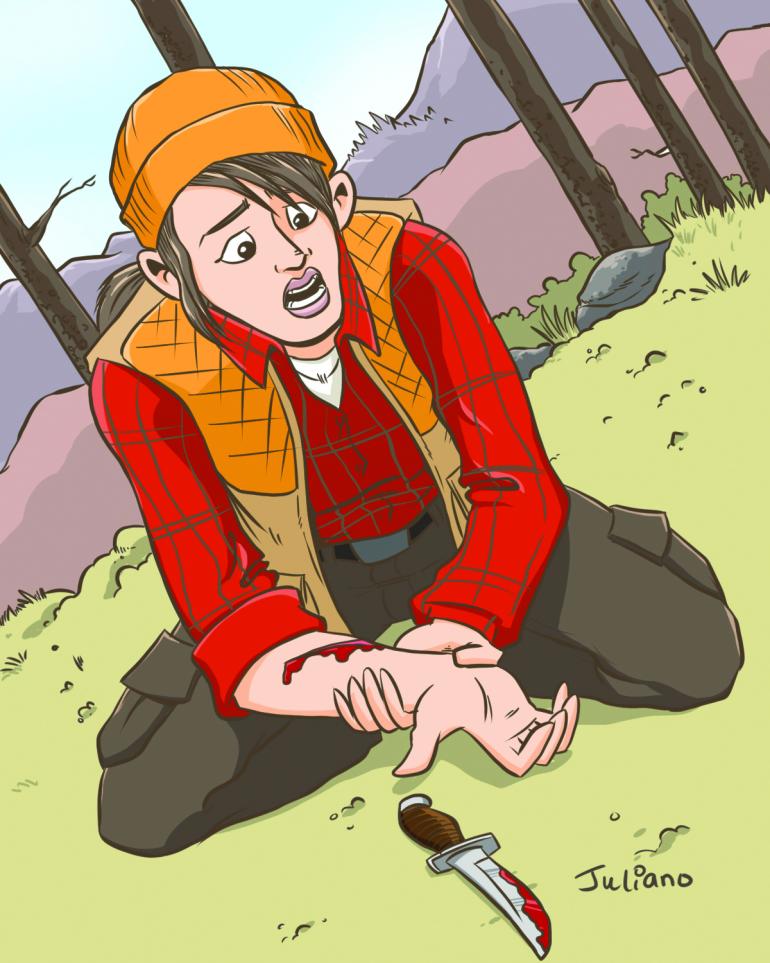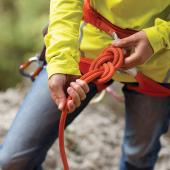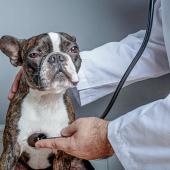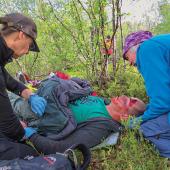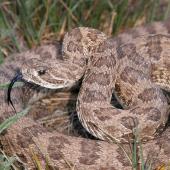Walking Wounded
A look at some common outdoor injuries.
As with any outdoor activity, prevention and planning are the best safety aids—but mistakes happen. Here are some common hunting injuries and how to deal with them.
Sprains
Everyone slips and falls in the woods, and sometimes a knee or ankle gets tweaked. For minor sprains, use the classic RICE method (Rest, Ice, Compression, Elevation). The faster you act, the better—dunk the twisted joint in a frigid stream or pack it with snow for a while, then elevate and compress with extra clothing and some rope. If you’re lucky, it’ll feel better in a few hours and you can at least walk out without help. More serious strains may require splinting; see below.
Breaks
If you break a bone, employ what you carry with you on the hunt to stabilize the limb. Use your rifle, bow, arrows (sans broadheads), trekking or tent poles, as splints. Tree limbs work great, too. Your belt, some rope, or strips of clothing will hold the splint in place. Move only as much as necessary to reach help.
Cuts
This is the most common hunting mishap: slicing open your finger during field-dressing. First, stop the bleeding—apply steady pressure for 15 minutes. That’s a full 15; easing up too early could undermine the clotting process. Next, flush out the wound with clean water. Finally, apply antibiotic ointment and seal the wound with a sterile bandage.
Hypothermia
Here’s where planning can save your life. Around here, extreme weather comes out of nowhere: the temperature plummets, followed by rain, snow, or freezing winds. Should mild hypothermia set in, first remove any wet articles. Next, cover your head to keep in heat. Drink warm liquids and set up a heat source if possible. It’s not a bad idea to carry a space blanket. Be extremely careful if more severe hypothermia occurs; send for help immediately and watch for shock. Add as much insulation and heat as possible, including skin-to-skin body contact if necessary. Keep in mind that hypothermia isn’t limited to rain and snow—it can happen with an outdoor temperature as high as 50 degrees. Perspiration alone may be enough to set things in motion, so stay dry and always pack extra clothes.


